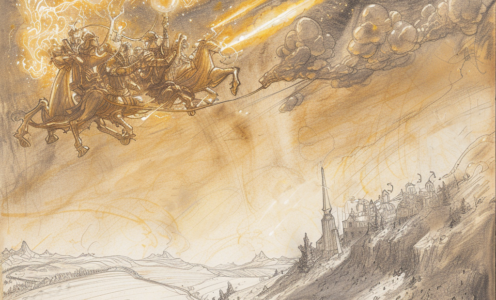The Outlandish Lands
Outlandish, adj. looking or sounding bizarre or unfamiliar;
— Grundlethum’s Automatic Scribe
foreign or alien; weird, grotesque, far out
The Outlands is a plane where balance ain’t just a concept, it’s knitted into the very fabric of the landscape. It’s a realm where the laws of nature and magic act like two bashers in a tug-o-war, each pullin’ against the other with equal might. You’re from the Prime, right? Well when you first clap your peepers on the ‘Land you might well think it’s a lot like home. But it ain’t, it really ain’t. Sure, the mountains are taller and the rivers are deeper and the colours are brighter, but there’s so much more to it than mere superlatives. It’s easiest to explain with some examples of what it’s really like to visit the Outlands. So let’s imagine, you step through a portal from Sigil and find yourself in the wild pastures just outside Tradegate. The gentle wind is blowing the corn in the fields and the sky is brilliant blue. So far, so familiar. Now here’s where it gets a bit barmy.
The Spire
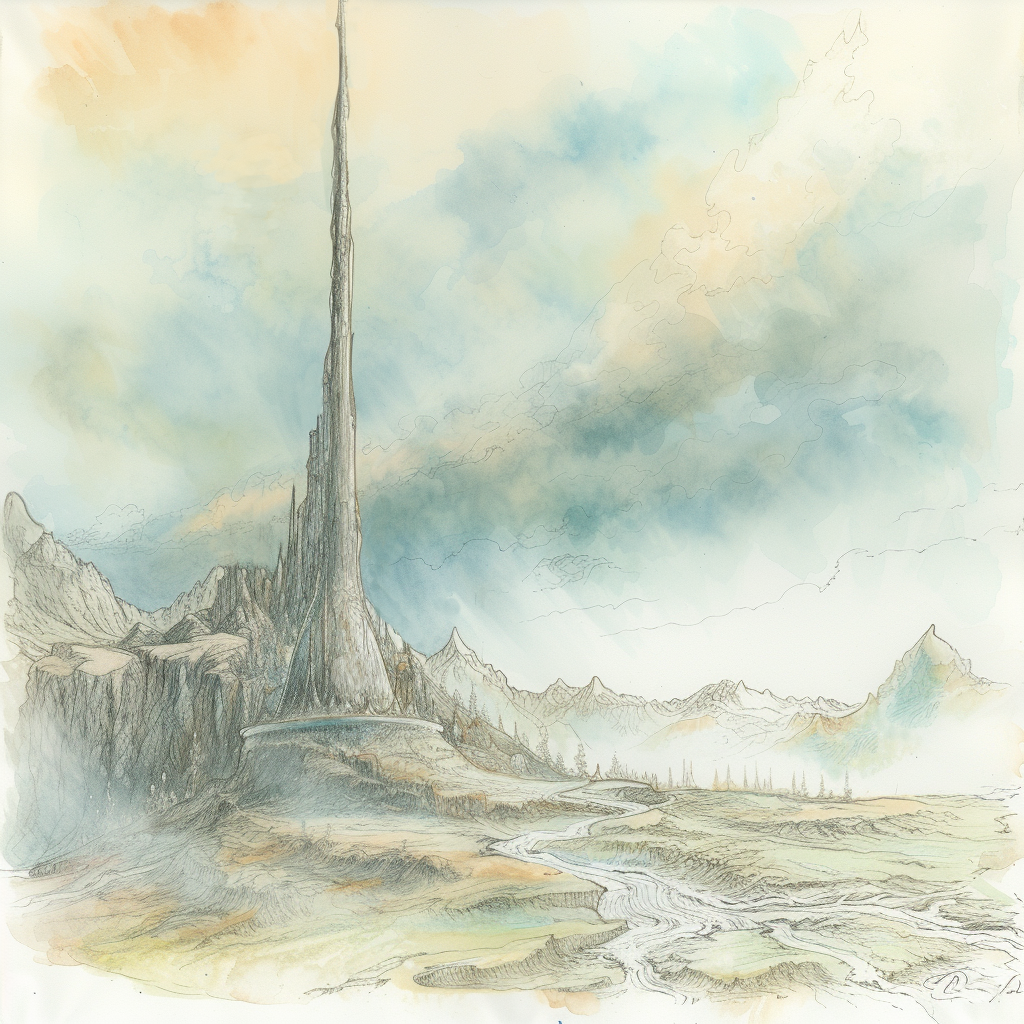
The Outlands have a strange way of playing a cutter’s perception, especially when they’re not paying it enough attention. When nobody is looking, the Land slips around, terrain shifts and moves, and things downright change. The most obvious place to start thinking about this is the Spire. It stands proud bang in the centre of the plane, an ever-present monolith scraping the skies with its infinite height. On a really clear day, somehow, impossibly floating just above the Spire’s peak, you can make out the distant shape of Sigil, that Cage of the Lady of Pain. How can an infinite mountain have a peak? Best not to think too hard about that kind of thing, because that’s an easy way to drive yourself barmy, basher. Ah, the sweet paradoxes of the planes.
Now wherever you go in the Outlands, you can see the Spire, either itself or its imposing shadow. You know, you can actually feel its presence looming even when you’re facing away from it, like when some cutter is peering over your shoulder at what you’re doing and you get that prickling sensation on the nape of your neck. Yes cutter, the same feeing you get when you sense you’re being scryed upon. Now that barmy mountain can do that to you too. Although who’s actually doing the watching, now that’s a story for another time.
But then sometimes, when you glance out the corner of your eye, it ain’t a spire of rock any more. It might be a giant pine tree, or a waterfall cascading down from the heavens, or a bonfire with an infinite spiral of flame and smoke, or a shaft of light, a crystalline tower, a Greek column, or an infinitely tall cyclone. But then, you turn and look directly at it, and sure as Sigil it’s the sturdy old rocky Spire again. Chant goes cutters see what they want to see deep down; elven bashers say tree, tieflings say fire, aasimar reckon light, and so on. Or perhaps the Spire really is all those things to all people; raw potential, as it were. They say that if you let your eyes relax and calm your mind, that’s when you’re most likely to spot it, but let your concentrating on not concentrating lapse then it’s the Spire again. Why the Outlands plays this trick is any basher’s guess but it sure can be unsettling.
Travel
The next thing that all ‘walkers of the Outlands will recognise are the weird travel times between locations. One jaunt between Excelsior and Fortitude, adjacent burgs on the Great Ring of gate towns might take you 3 days, if you’re lucky. But the return trip, eighteen. You’re travelling the same road, with the same horse, at what feels like the same speed, but somehow, it takes you six times as long.
Why? Oh cutter, that’s a story as long as my nose. If you’re interested in the wherefore and the whyfor and the howdo, take a look here.
But back to my story. What if you want to travel from Excelsior to Automata then? With Fortitude lying in between them, a body will need to spend 3-18 days on the path from Excelsior to Fortitude and then the same again to Automata. Even if you try to bypass Fortitude it’ll not save you any time. Clearly, overland travel in the Outlands can be predictably unpredictable and time-consuming. The modrons do it the long way, just by putting one mechanical foot in front of the other may, many times, But we’re better than a rorty cube, right? How do true planewalkers do travel the Outlands? Turns out there are three options:
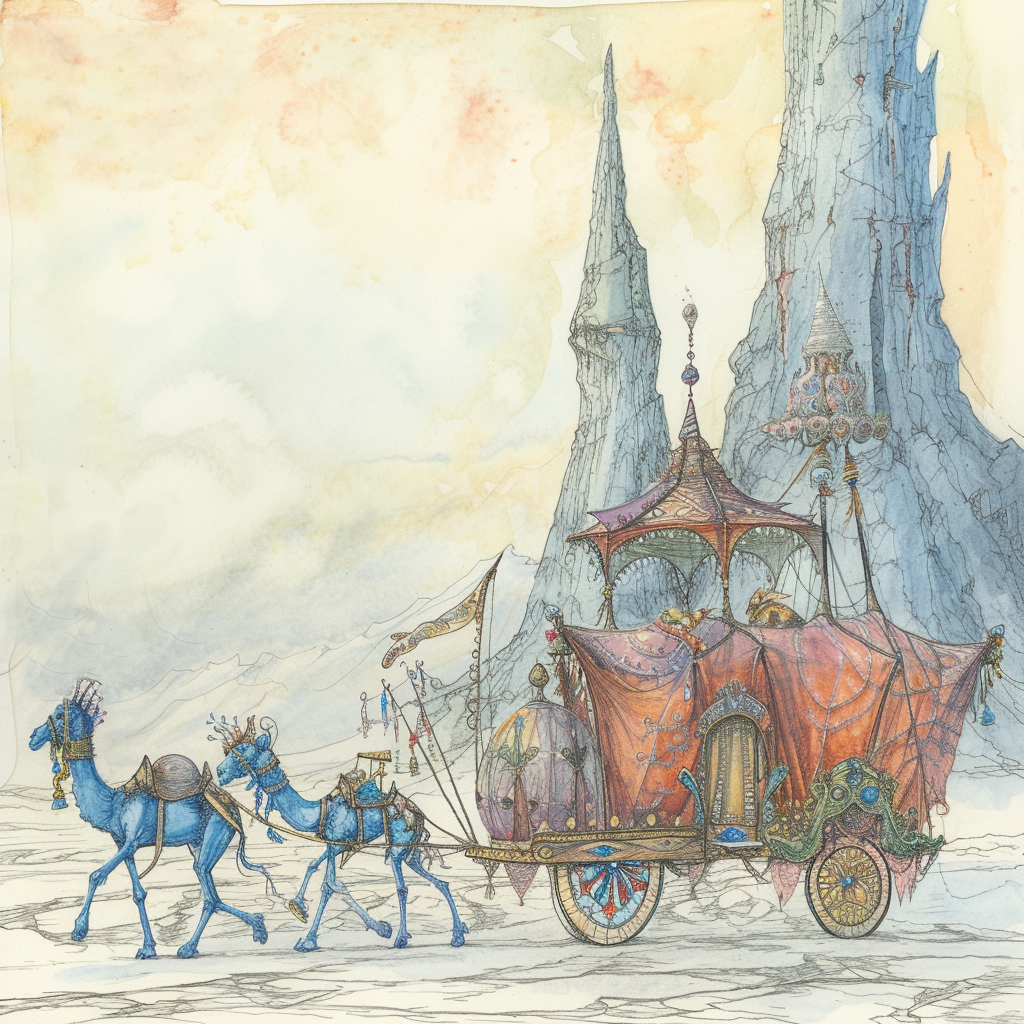
- Get used to it. Enjoy the slow way of travel, walking or riding a horse—fact is, a faster-moving transport won’t get you there any quicker. A cutter with a teleportation spell might be able to jump around the plane directly, if the destination is in range. And not too far towards the Spire—don’t forget magic stops working as you get closer.. Now canny planewalkers have their own tricks that they swear speeds up travel. Some folks believe that if enough cutters in the group want to get somewhere strongly enough and can focus their minds with meditation, magic or narcotics, the Outlands may oblige and help speed them along. Others basters reckon that a group of travellers with the most diverse philosophies, a balance of good and evil, or law and chaos if you will, seem to travel more quickly. The effectiveness of these tricks is questionable. The important thing to remember is that if your journey is slow one time, it’ll be faster the next. The Outlands is built on balance after all, cutter.
- Choose your travelling companions wisely. It’s a badly-kept secret that the rilmani caravans that criss-cross the Outlands know the secret paths that get them from Automata to Xaos faster than should be possible. Sometimes they’ll take a liking to a planewalker and let them travel with their caravan. Less speedy but infinitely more predictable, the Concordant Express is a modron-run contraption of steam, clockwork and magic that travels around the Great Ring on a strict schedule. The easiest place to board is the Grand Terminus in Automata. And thirdly, Epona’s daughters make excellent travel companions, if you can find a way to persuade them to carry you and can track them down in Tir na Og. I find them really partial to sugary snacks. Don’t look at me funny berk; I should probably add here that they’re magical horses!
- Travel at right angles. Now the fastest way to travel turns out to be going in a completely different direction. A canny cutter might wish to find a portal from Excelsior to Sigil, take a walk across the Cage and then use another port to take them straight to Automata. The trick here is learning the dark of which portal is which, and locating the correct keys. Double them up if you want to return again, of course. But this can cut a journey time of a month to a day or two, if you know who to talk to in the Cage. You might be able to pull off a similar trick with travel on a Planar Pathway, or even through the Astral, if you can find a colour pool.
The Directions
Now the Outlands don’t have time (or the magnetism) for Prime concepts like North and South. As you might expect, things here are dominated by the Spire. Travellers moving towards the Spire are said to be heading spireward, and the opposite direction to this is brinkward. While these two are the most useful, in fact there are a lot of words planewalkers have invented to describe their travels around the Outlands.
The Terrain
Once you stop beyond the gate towns and into the Ringlands, the Outlands really open up. The terrain you’ll find is as varied as any Prime world, except there’s more of it, it’s bigger, more dramatic, and comes at you thicker and faster. Rolling, grass-covered hills, deep canyons, wide open prairies with the biggest skies, densest forests, and sharpest-toothed mountains dot the landscape. Heavy fogs and mists are common. Travellers occasionally get lost and wind up closer to unfriendly portal towns than they anticipated.
If the terrain of the Outlands is one thing though, cutter—it’s outlandish. So much so, that it deserves its own section. See here for more on the terrain of the Outlands.
The Sky
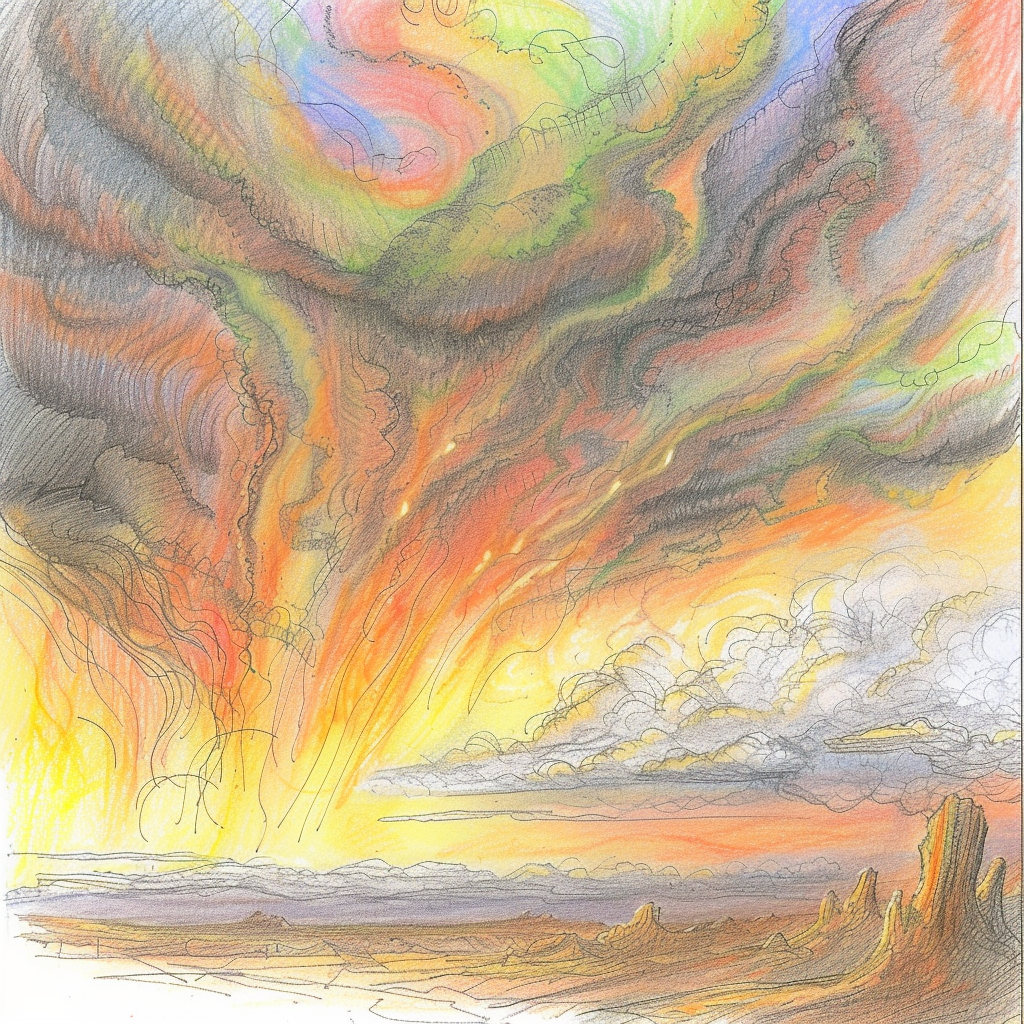
Next up, let’s talk about the skies of the Outlands and their outlandish weather. Berk, the sky here ain’t just blue; it shifts through a kaleidoscope of colours, mirroring the myriad moods of the plane. Sometimes, it’s a soothing lavender, other times a fierce crimson, or perhaps just a familiar blue; it all depends which way the planar winds are blowing. Throughout a year’s cycle of months, the philosophical winds sweep in from each of the Outer Planes in turn, bringing with them treats or tribulations. You can find out more about the Outlands calendar here, cutter. In a sense, it’s predictably unpredictable; the months flow, following each other in an orderly pattern. Except of course then they don’t. The Outlands does like to throw in Astral Days here and there, and of course the month of the Veiled which strikes whenever it sodding well likes. But otherwise the cadence of the seasons follow one another.
Another thing to scratch your bone-box about is the clouds. You’ll see them moving around slowly, in both directions; it seems they don’t care much for the wind. Sometimes, lightning crackles between them. Some clouds are dark with water and rain, others glow menacingly from the inside. Some of the clouds are solid, and these ones tend to be inhabited by flying folks, or castles, or even the occasional burg. Some of the clouds make a whirring clicking sound like they’re clockwork. Others change colour. And some of them talk. Well cutter, actually those ones are not clouds at all—they’re mortai, sentient cloud-like beings from the Beastlands. They’re especially common during the month of the Flocking, but they seem to be able to come and go between the two planes at will.
The Day
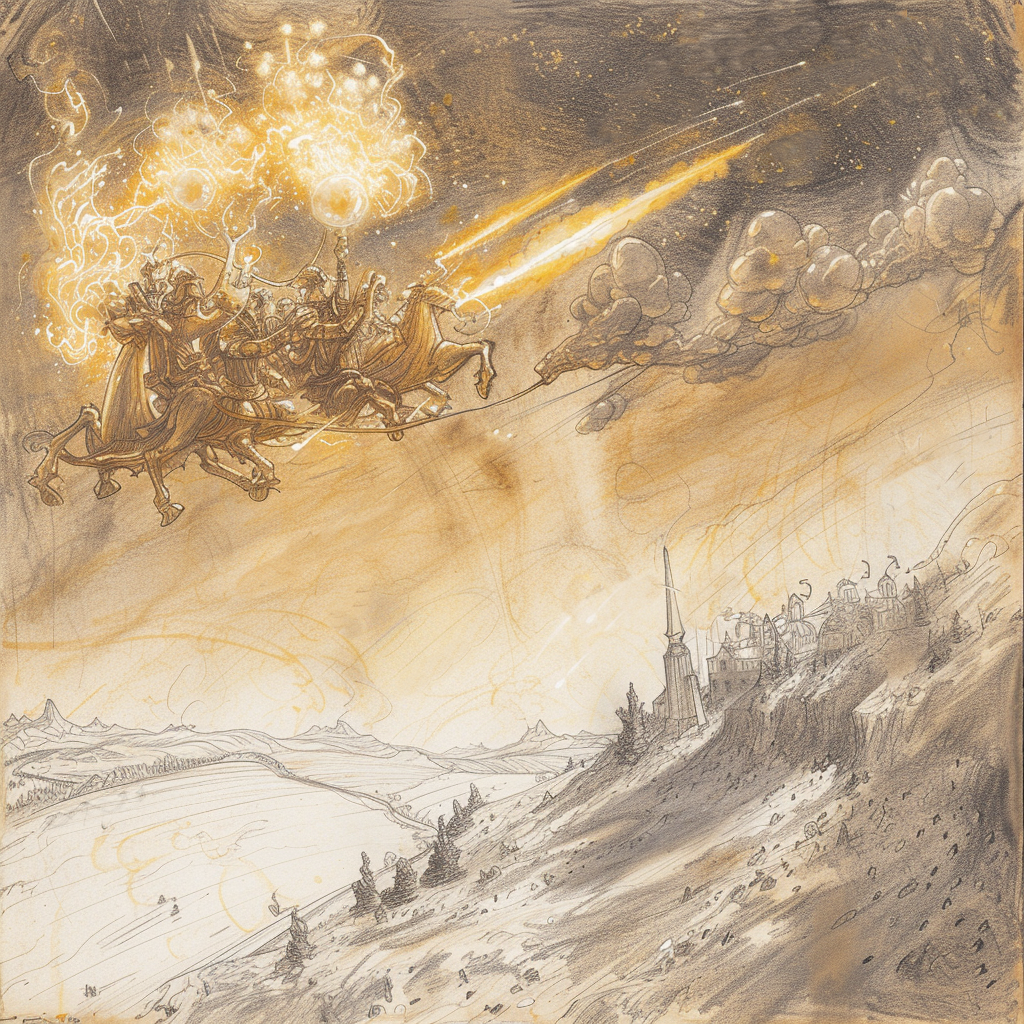
The Outlands has a cycle of day and night similar to that of the Material Plane, although there’s no obvious sun or stars. From dawn, during the day, the sky simply brightens for six hours to reach a maximum at what the locals call Peak (noon) and twelve hours later, it darkens to a minimum at Antipeak (midnight). Yes cutter, the same as in Sigil. Nobody casts a shadow, not even the Spire, when the whole sky is gently glowing at Peak.
Now the legends told by the Chinese Pantheon go that there used to be ten suns and they took it in turns to rise, but one day they all rose at once and all the crops withered. The powers that be sent Yi, the divine archer, to shoot the suns down and then there was only one, which solved that problem, for a while at least. Another time the giant Espereg-era stole the last remaining sun for the giants, plunging the Outlands into darkness. The Vedic hero-god Mandi disguised himself as a child, bobbed the giants into adopting him, and then gave them the laugh and stole it back. After that, the legends continue, the powers decided that policing the sun was too much like hard work and decreed the sky would simply glow instead.
But of course it’s never that simple. In the month of Halcyon, when the winds blow in from Arcadia, the sun-barge of Ra travels across the Outlands, lighting up the skies. During Exhilarus, the Arborean month, the Olympian power Helios drives his chariot around, keeping his nosy attention parked on the land. In the Rotting, you can see the dying sun of Pazunia hanging low in the sky. Bravura’s light comes from a chariot driven by the power Sol, who is usually pursued across the firmament by the great wolf Sköll trying to devour it—and sometimes she manages to as well, leading to a rare eclipse. With all things Outlandish, things get complex, chaotic, yet somewhat predictable at the same time as ancient patterns and stories play out cycle after cycle.
The Night
Nighttime draws in when the glow fades, or Sol escapes the wolf, or Ra descends to the Underworld to battle Apep. That’s when you might see the three Lights of Balance that shine at the centre of the Outlands near the Spire. Chant goes they’re maintained by the rilmani, and provide a dim silvery twilight glow at night, but the frequent mists and fogs of the Land mean that they’re usually diffuse and those nights are pretty much dark. The skies of the Outlands don’t have stars, but you can sometimes see the sinister face of a god-moon called Groetus when he escapes from the Underlands. It’s supposed to be bad luck to travel on those nights. On a clear night you might be able to see into the Astral Plane, where the shimmering, writhing silver ribbon of the River of Souls is visible like a constellation. It’s an eerie sight for sure, but a breathtakingly beautiful one.
The Magic
Every basher knows that the Spire has a neutralising effect on magic, even the magic of the powers. As you get closer to the Spire, magic is more and more nullified, until in the foothills of the Spire, a god has no more supernatural power than a mortal. A cutter would be wise to track the change in the magical weave, lest items they carry, or spells they cast fizzle out. For more on the largest magic-dead area in the multiverse, you can get the dark here.
The Colour Pools
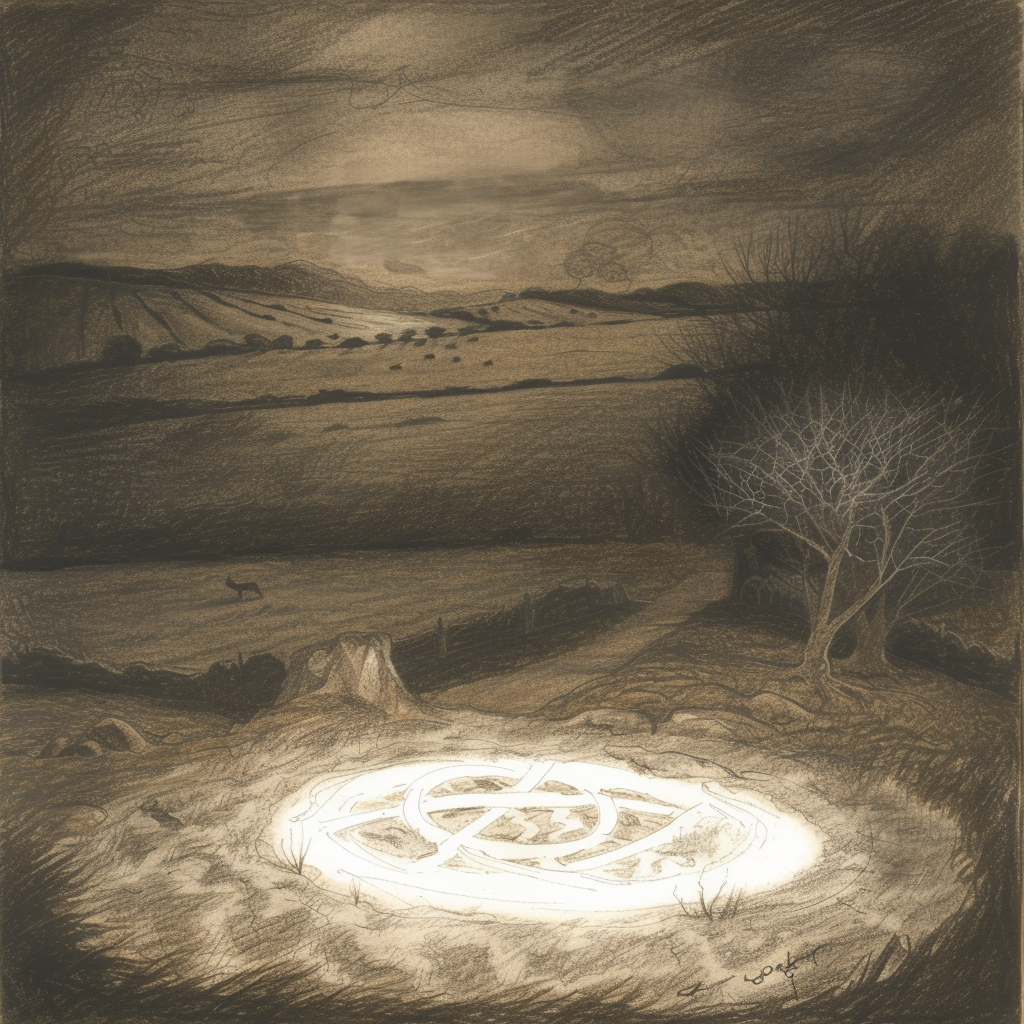
Often forgotten by planewalkers are the colour pools of the Ringlands. Now whoever named these was clearly having a laugh because they’re all white; simple discs of white light and runes laid into the ground—although they do drift through the landscape as the Outlands reshapes itself at night. Unlike the gates of the eponymous towns, colour pools are gates that will do what you tell them. Mostly. The discs come in various sizes, some large enough for one traveller at a time, and some large enough for whole parties. The trick to using them is concentrating on the plane you want to do to. Obviously, it helps if you’ve been there before—it’s hard to envisage a plane you’ve never visited. It also helps if all the travellers agree. If those conditions aren’t satisfied then the would-be planewalkers might not end up where they intended—perhaps one plane widder or deosil from their intended destination. Or perhaps the complete opposite location in the Great Wheel.
The chant goes that these colour pools are actually some kind of interplanar flowerbuds, waiting politely for their turn to bloom into the gates that are the heart of every Gate Town. When a gate town slides over into another plane in the mysterious process called cosmic realignment, the interplanar conduit between the Outlands and the plane in question is severed. It thrashes around in the Astral until it is drawn to a latches on to a nearby colour pool in the Outlands, thereby creating the next permanent gate to the plane. While canny planewalkers have attempted to guess which colour pool might next blosson into a gate—in order to pre-emptively take over the surrounding terrain—in practise these little beasties are too unpredictable to be tamed in that way.
| D100 Roll Result | |
| 01-80 | Random location on the first layer of the intended destination plane |
| 81-90 | The first layer of one plane away clockwise or anticlockwise |
| 91-00 | The first layer of the plane opposite on the Great Ring to the intended one |
Source: Jon Winter-Holt, mimir.net. Canonwatch: If you read the 1e Manual of the Planes, the ‘look’ of the Outlands is very unusual—according to those rules each PC will see something completely different; perhaps an elf sees the plane as a giant forest, a dwarf as tunnels and a wizard as an endless library. This is very cool, but I have no idea how I’d work that in a game. What I’ve presented here is a compromise, keeping the great subjective landscape concept but making it much more subtle. Regarding travel times, 2e Planescape mentions the 3d6 day travel time between two adjacent locations. The tricks to shorten that time that I mentioned are things I’ve homebrewed in my own game to speed things along when needed without using a portal—use them if they’re helpful for your pacing. 5e Planescape is more vague on travel times, saying a journey could take ‘minutes or days’ (S&tO p61). Finally, the colour pools come from the 1e AD&D Manual of the Planes, although they misfired for travellers of a chaotic alignment, which seems rather harsh, so I modified this a little. Planescape 2e didn’t mention them (I think they sort of morphed into the gates of the Gate Towns) but I’ve included as I’m a completist and they could be a fun thing to throw in.

